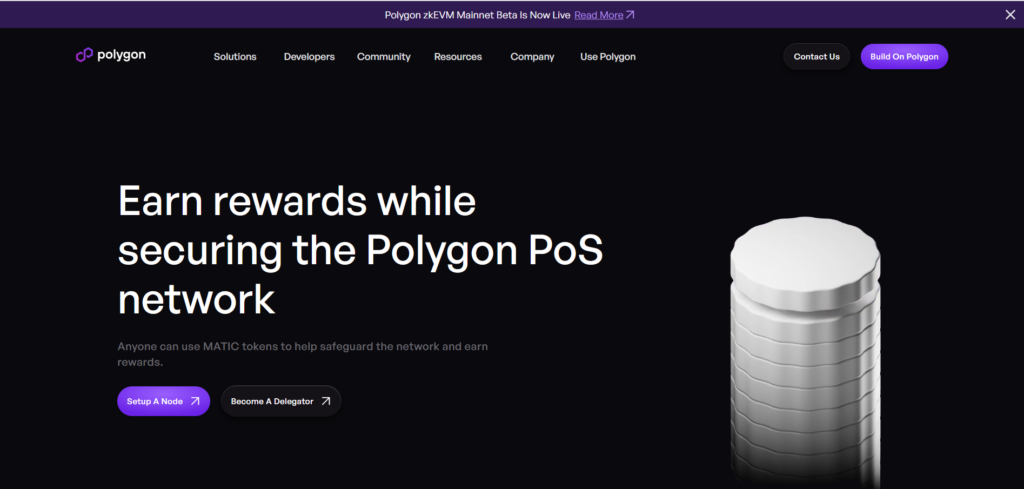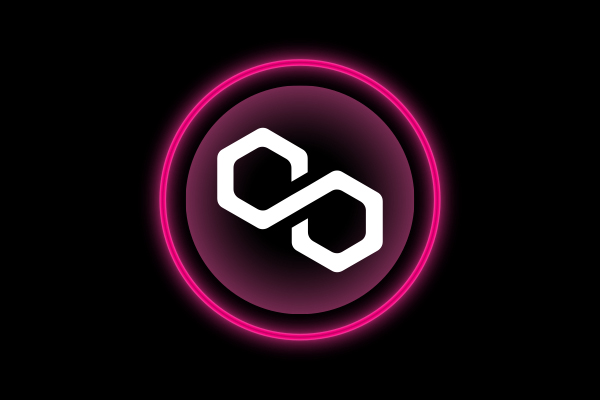Polygon, formerly known as Matic Network, is a scalable and interoperable blockchain platform developed as a Layer 2 solution for the Ethereum blockchain. The goal of the project is to create a solution that allows users to perform fast and cost-effective transactions on the Ethereum blockchain without compromising the security and decentralization of the blockchain.
| Token | MATIC |
| founded | 2017 |
| Projects | Adidas, Prada, Walt Disney |
Polygon was founded in 2017 by Jaynti Kanani, Sandeep Nailwal and Anurag Arjun under the names Matic Network in Mumbai and has since experienced rapid growth and a large community. Polygon Network is backed by a strong community consisting of developers, investors, and blockchain enthusiasts. The project has partnered with various companies and projects in the crypto industry, including market leaders such as Binance and Coinbase.
Problem
The problem that Polygon addresses is scaling Ethereum. Ethereum is one of the most popular blockchain platforms and offers developers the ability to create decentralized applications (dApps). However, scaling Ethereum is an issue because the blockchain can currently only process a limited number of transactions per second (TPS). This leads to high transaction fees and long waiting times for users.
Solution
Polygon’s mission is to solve these scaling issues by providing a fast, scalable, and cost-effective solution for Ethereum. The Polygon network uses a sidechain architecture to process transactions outside of Ethereum’s main chain. This results in faster transaction times and lower fees for users. In addition, Polygon enables interoperability between different blockchains and protocols. Developers can use Polygon to create dApps that can run on different blockchains and still interact with each other. This improves usability and expands the ability for developers to create applications that are distributed across multiple blockchains. Polygon is thus an extension of Ethereum that aims to improve the performance of the Ethereum blockchain.
Step by Step Staking Guide
Opportunities
- Passive source of income in the form of token rewards
- Support and participation in decentralized networks
- Securing the consensus mechanism
Risks
- Slashing risk, i.e., deletion of tokens because of incorrect behavior of a validator. Slashing is part of the blockchain network and serves as a security mechanism to prevent wrongful behavior or invalid transactions of validators – therefore, care should be taken to choose a trustworthy validator partner.
- Once the staking process is resolved, there is a lockout period of 3 days during which you cannot access your Matic tokens.
Disclaimer: This guide is a technical guide for a possible approach to the staking process and is not financial investment advice. Telekom MMS is not liable for any losses that may occur through staking via the Polygon network, or any other staking process

Step by step guide using MetaMask wallet:
1. Head over to https://staking.polygon.technology/.
2. Connect your MetaMask wallet to the Polygon Dashboard by clicking on the “Connect to a Wallet” button. If you don’t have one yet, get one here.
Note: You need to have MATIC and Ethereum on the Ethereum Mainnet in your wallet.
3. Connect your MetaMask wallet to the dashboard and sign in your wallet to proceed.

4. Search for a validator of your choice (e.g. Telekom MMS) in the search function.
Any node ID can be entered here, our ID is for example: 0xd08715c982d3199edb61b01a8d4f6f293ab362f8
5. Click on the ‚Delegate‘ button and enter the amount of MATIC that you would like to delegate. Note that you will also need some ETH for fees throughout this process, as we are on the Ethereum mainnet.
6. First of all you will need to authorise the transaction, which requires a fee to be paid at ETH. To proceed click „Continue“ and pay the ETH fees.
7. Continue through the staking interface by pressing „Delegate“ once you have approved the initial transaction. A final ETH fee will be requested at the end of the staking process.
8. You have successfully staked MATIC on the Ethereum mainnet once the transaction is confirmed on the blockchain.

Mia-Caroline Lohe
Mia Lohe is a working student in the marketing department and supports the team with research, creation and planning of content. Mia has been part of MMS since April 2021 and started as an intern in project management. In July 2022, she switched to Dirk Röder’s Web3 and Infrastructure team out of great interest. She is studying Business Informatics in her Master’s degree.

Ob Digitalisierungsexpert*in, Werkstudent*in oder Schülerpraktikant*in – Hier berichten unsere Gastautoren aus ihrem Alltag.









